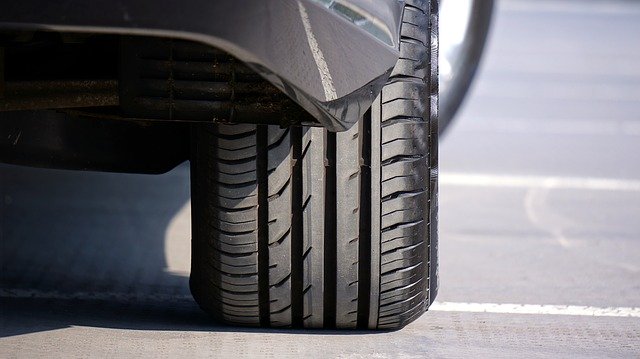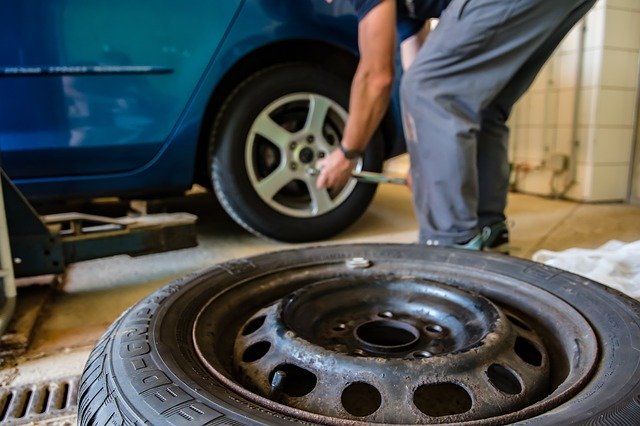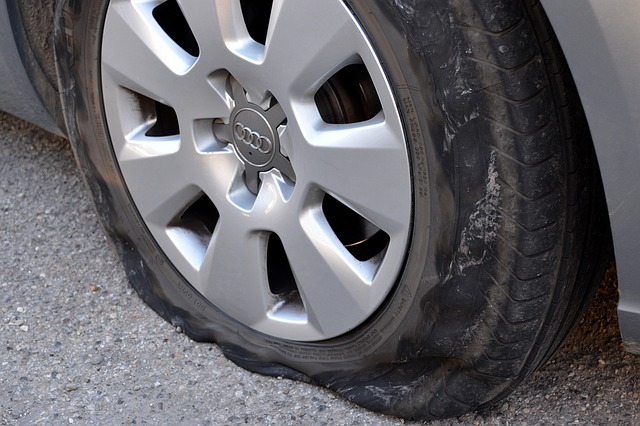How long can car tyres last? Well, there is no precise answer to this question as there are several factors that determine the lifespan of your car tyres.
For instance, your driving habits, weather and road conditions, design of the tyres, care taken, are some of the factors that determine the lifespan of the tyres. Your car tyres control car traction, steering, braking and stability.

When they start getting worn out, you need to replace them to avoid serious consequences, especially if you’re always driving around with your kids. Worn-out tyres are prone to cracks and can make it hard for you to apply the emergency brake.
Don’t let worn-out tyres compromise your safety. We have listed 5 signs for you to know the right time to change your car tyres to avoid any potential hiccups along the road.
1. Examine Tread Depth
This is the most obvious way to check signs of wear on your tyres. Shallow treads are a clear indicator that your grip has reduced and it is time to replace your tyres.
Checking the tread depth of your tyres is simple. Look for the tread wear indicator on your tyre and you will know the remaining tread depth.
Most of the time, tyres come with a treadwear indicator but if you can’t see it, head to an automotive store to have it checked for you.

You can also use the penny test whereby you insert a 20 cent coin and place it in the main tread groove. If the outer ring of the ring is inside the tread, then your tyre still has some miles to go.
2. Unusual Vibrations
It is normal to feel vibrations when driving, especially when you are on rough roads. However, you know something is not right when the vibrations persist when you are driving on a smooth motorway.
While vibrations can be as a result of faults in your car, including having faulty shock absorber and poor wheel alignment, a worn-out tyre can also be the culprit.
If you check for wheel alignment and shock absorbers and find them all in good shape, then the problem might be your tyre.
Vibrations caused by worn-out tyre normally increases as you go faster. If you feel the vibrations coming from under the seats, the rear tyres might be worn out.
3. Abnormal Bumps or Bulges
If you notice any abnormal bumps, bulges, or knots on any of your car tyres, then it is high time to replace the tyres.
Bubbles or bulges in your tyres may be caused by driving through large potholes or driving with low tyre pressure. If the bulge is in the sidewall of a tyre, this is an indication that the internal frame of a tyre has been damaged or compromised.
This means that air pressure is leaking from the integral frame and finding its way to the flexible outer layer of the tyre. You should never drive with tyres that have bumps, bubbles, or bulges as this means their structural integrity has been significantly reduced.
Driving with such tyres can put you at risk of accidents, especially when you hit top speeds. Therefore, replace the affected tyres as soon as possible.
4. Frequent Punctures
When your car tyre is worn out, there is a possibility of experiencing frequent punctures. This is because the rubber tread is exhausted, thereby making it easy for sharp objects such as metal wires, nails, and broken glass to puncture your tyre.

When in good shape, the thickened rubber tread prevents objects from penetrating the tyre, which explains why it is rare to experience punctures when the tyres are new.
Therefore, if you start experiencing frequent punctures, then know that it’s time for a tyre change.
5. Tyre Lifespan
Just like other car parts, tyres have their lifespan, which is roughly five years. After this period, the rubber compound begins to disintegrate, thereby leaving them more susceptible to cracks and blisters.
Lifespan can also be indicated by the number of kilometres clocked. If you travel a lot every day, you may need to check the number of kilometres you have covered to know if your tyres need to be replaced. On ideal city roads, tyres can serve you for about 40,000 – 50,000 kilometres.
It is recommended that you replace your car tyres in sets of four, especially for all-wheel drive vehicles.
Ensure that all the four tyres are of the same size, tread design, brand, tread depth, and construction to prevent wheel misalignment and differences in the outer diameter of the tyres. Even the smallest difference may cause mechanical malfunction or vibrations.
We hope this helps busy parents to be on the lookout for any potential tyre issues!
This article is contributed by Amtyre.
* * * * *
Stay in touch! Subscribe to our Telegram here for all our latest updates.
Like what you see here? Get parenting tips and stories straight to your inbox! Join our mailing list here.

























































Leave a Comment: